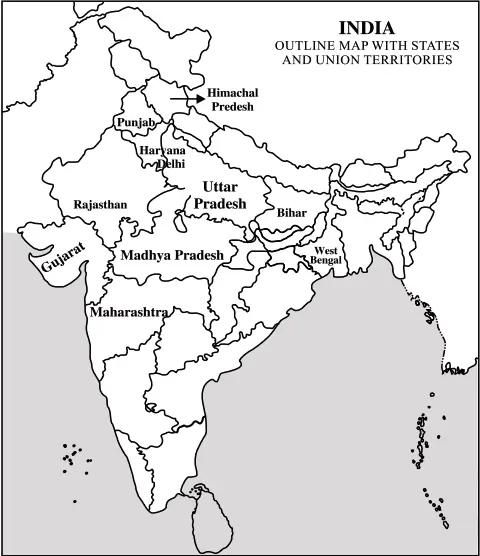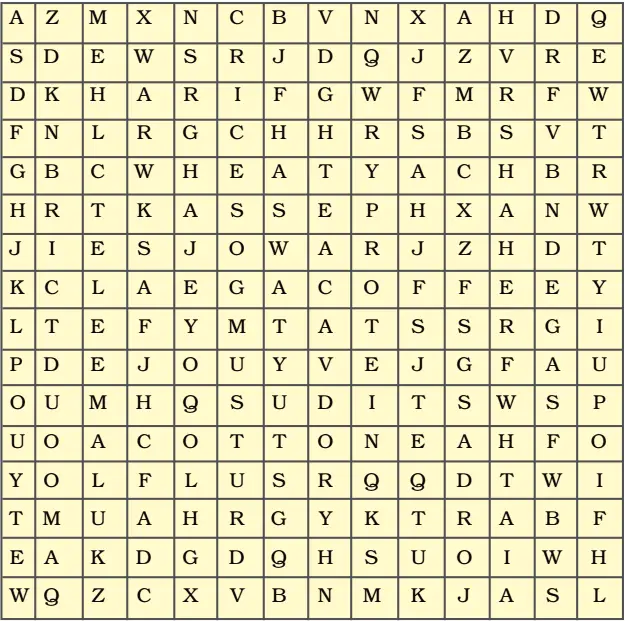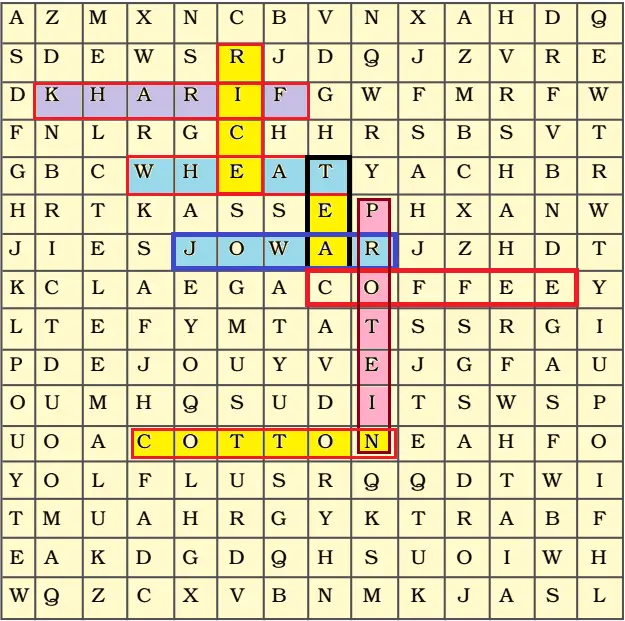NCERT Solutions for Class 10 Social Science Chapter 4: Agriculture - Ace your CBSE Exams!
Grasp agricultural concepts with ease! NCERT Solutions for Class 10 Social Science Chapter 4: Agriculture provides comprehensive explanations and answers to all exercise questions. Understand various farming practices, crop patterns, and government initiatives in India’s agricultural sector. Boost your exam preparation and score high marks in CBSE Social Science!
NCERT Solutions
Intext Questions
Question.1. Can you name some industries based on agricultural raw material?
Ans.
- The Sugar Industry
- The Cotton Textile Industry
- The Jute Textile Industry
- The Vegetable oil industry
- The Tea Industry
- The Coffee Industry
Question.2. Can you name the type of farming Rinjha’s family is engaged in? Can you enlist some crops which are grown in such farming?
Ans. Rinjha’s family is engaged in Primitive Subsistence Farming. Crops which are grown through such farming are rice, maize, cotton, ginger, linseed, rapeseeds, sesamum, pineapple and jute, soya-bean, potato, pumpkins, cucumbers, yams, tapioca, chilies, beans, and onions.
Question.3. Can you name some of the states of India where such farming is practiced? [Intensive Subsistence Farming]
Ans. Intensive Subsistence Farming is practiced in densely populated regions of Haryana, Punjab, Western Uttar Pradesh, West Bengal, Tamil Nadu, Kerala, and coastal areas of Andhra Pradesh.
Question.4. Can you give some more examples of crops which may be commercial in one region and may provide subsistence in another region?
Ans. wheat is a commercial crop in Punjab Haryana and Western region of Uttar Pradesh, but is a subsistence crop in Madhya Pradesh and some parts of Bihar.
Question.5. List the items which are made of rubber and are used by us.
Ans.
- Automobile tyres and tubes.
- Conveyor or belts.
- Insulating mats.
- Footwears.
- Toys.
- Gloves.
- Erasers.
- Balls.
- Tools.
OR
Raincoats, boots, grips on garden tools, bathtub plugs, doorstops, earplugs hot water bottles, aquarium tubing.
Question.6. Find out why an Indian farmer does not want his son to become a farmer.
Ans. Because of increased cost of cultivation, private money lenders, use of chemical fertilizers, low produce prices, crop failure, debt.
Although the GDP growth rate is increasing over the years, it is not generating sufficient employment opportunities in the country. The growth rate in agriculture has been decelerating which is an alarming situation. Today, Indian farmers are facing a big challenge from international competition and reduction in the public investment in the agriculture sector. Subsidy on fertilisers is decreased leading to increase in the cost of production. Moreover, reduction in import duties on agricultural products have proved detrimental to agriculture in the country. Farmers are withdrawing their investment from agriculture causing a downfall in employment in agriculture.
Question.7. Why are farmers committing suicides in several states of the country?
Ans.
- The surge in input costs : A major cause of the farmers’ suicides in India has been the increasing burden on the farmers due to inflated prices of agricultural inputs. The culmination of these factors is seen in the overall increase in the cost of cultivation.
- Cost of chemicals and seeds : Be it the fertilizers, crop protection chemicals or even the seeds for cultivation, farming has become expensive for the already indebted farmers.
- Costs of Agricultural equipment : Using agricultural equipment and machinery like tractors, submersible pumps etc adds to the already surging costs. Besides, these secondary inputs have themselves become less affordable for the small and marginal farmers.
- Labour costs : Likewise, hiring labourers and animals is getting costlier too.
- Distressed due to loans.
- Lack of direct integration with the market.
Question.8. When farmers have been facing so many problems and land under agriculture is decreasing, can we think of alternative employment opportunities in the agriculture Sector?
Ans.
- Horticulture is the science of growing and cultivating fruits, vegetables, herbs, ornamental trees, and decorative flowers. Horticulturists aim at improving the quality, growth, nutritional value and yield of their produce. They also work to maintain nurseries, greenhouses, orchards, and plantations, etc.
- Dairy technology is a field mainly concerned with the production and processing of milk. Professionals in this field manage the production of milk, including its collection and storage, and oversee its processing to make the milk fit for consumption.
- Poultry farming: It involves raising domestic birds like chickens and ducks for procuring their meat and eggs. Majority of the poultry farms are involved in raising chickens due to their wide consumption both for eggs (Layer chickens) and meat (Broiler chickens).
- Fisheries Science: This area of study deals with understanding the principles of cultivation and harvesting of fish on a commercial basis in freshwater, brackish (saline) water or any marine environment. It also focuses on studying the life, habits and breeding of various species of fish.
Question.9. Can you name any gene modified seed used vastly in India?
Ans. Cotton.
Question.10. Organise a debate on food security of India, its need and efforts.
Ans. Two groups were formed under the supervision of a teacher who teaches Geography and Economics. After this, a debate competition was organized on this topic and reached the desired conclusion. The main points of the debate are as follows :
- Food Security of India : Under this point, India’s population, present food production and distribution can be debated. Apart from this, the present status of food security in India can also be assessed.
- Need for food security : Under this point of contention, understanding the current status of food security in India and the rapidly growing population, the assessment of future needs can be discussed.
- Food Security Efforts : Under this point of debate, these efforts can be discussed, with the help of which the food needs of a rapidly growing population can be met in future by increasing agricultural production.
The debate competition should be ended on the attainment of the expected conclusion after discussing all the relevant points.
TEXTBOOK EXERCISE
I. Multiple choice questions.
Question.1. Which one of the following describes a system of agriculture where a single crop is grown on a large area?
(A) Shifting Agriculture
(B) Plantation Agriculture
(C) Horticulture
(D) Intensive Agriculture
Ans. (B) Plantation Agriculture
Question.2. Which one of the following is a rabi crop?
(A) Rice
(B) Gram
(C) Millets
(D) Cotton
Ans. (B) Gram
Question.3. Which one of the following is a leguminous crop?
(A) Pulses
(B) Jawar
(C) Millets
(D) Sesamum
Ans. (A) Pulses
II. Answer the Following Questions in 30 Words.
Question.1. Name one important beverage crop and specify the geographical conditions required for its growth.
Ans. Tea is one of the important beverage crops. The tea plant grows well in tropical and sub-tropical climates endowed with deep and fertile well-drained soil, rich in humus and organic matter. Tea bushes require a warm and moist frost-free climate all through the year. Frequent showers evenly distributed over the year ensure continuous growth of tender leaves. Tea is a labour-intensive industry. It requires abundant, cheap and skilled labour. Tea is processed within the tea garden to restore its freshness.
Question.2. Name one staple crop of India and the regions where it is produced.
Ans. Rice is a major staple crop of India. It is grown in the following regions:
- Plains of North
- North East India
- Coastal Areas
- Deltaic Regions
Question.3. Enlist the various institutional reform programmes introduced by the government in the interest of farmers.
Ans. Various institutional reform programmes introduced by the government are-
- MSP (Minimum Support Price)
- Subsidy on Fertilizers
- Crop insurance
- Establishment of Grameen banks to provide low-interest loans.
Question.4. The land under cultivation has got reduced day by day. Can you imagine its consequences?
Ans.
- Shortage of food.
- The rise in prices of food.
- Imports increase will put stress on the economy.
- Rise in unemployment.
III. Answer the Following Questions in About 120 Words.
Question.1. Suggest the initiative taken by the government to ensure the increase in agricultural production.
Ans. The Government of India introduced agricultural reforms to improve Indian agriculture in the 1960s and 1970s. The Green Revolution based on the use of package technology and the White Revolution (Operation Flood) were some of the strategies initiated to improve a lot of Indian agriculture. But this too led to the concentration of development in a few selected areas. Therefore, in the 1980s and 1990s, a comprehensive land development programme was initiated, which included both institutional and technical reforms. Provision for crop insurance against drought, flood, cyclone, fire and disease, the establishment of Grameen banks, cooperative societies and banks for providing loan facilities to the farmers at lower rates of interest were some important steps in this direction. Kisan Credit Card (KCC), Personal Accident Insurance Scheme (PAIS) are some other schemes introduced by the Government of India for the benefit of the farmers. The government also announces minimum support price, remunerative and procurement prices for important crops to check the exploitation of farmers by speculators and middlemen.
Question.2. Describe the impact of globalisation on Indian agriculture.
Ans. There are positive & negative impacts of globalization on Indian farmers as followed:
Positive impacts :
- New techniques are adopted in farming.
- Increase in productivity.
- Minimum usage of fertilizer and pesticides and water.
- Fruits, nuts, vegetables which were first imported from foreign countries are now produced at our places and exported which in turn increased foreign exchange.
- Research and Development to acquire a position in the world agriculture market.
- Establishment of food processing industries, increase in employment.
- Minimum wastage of grains, fruits, vegetables as we can adopt techniques from developed countries.
Negative impacts :
- Less manpower in the field leading to unemployment in villages.
- High cost.
- Increased gap between rich and poor farmers.
- High-cost leads to high loans which in case of crop failure results in high losses, forcing farmers to commit suicide.
Question.3. Describe the geographical conditions required for the growth of rice.
Ans. The geographical conditions required for the growth of rice are as follows:
- It is a kharif crop which requires hot and humid climate for cultivation.
- Temperature (above 25°C) and high humidity with annual rainfall above 100 cm are favourable for the growth of rice.
- Rich alluvial soils of the floodplains and deltaic areas which are renewed every year are ideal for rice cultivation.
- Rice requires abundant rainfall or good water supply through irrigation and flooded fields during the earlier part of its growing season in June-July.
Project work
Question.1. Group discussion on the necessity of literacy among farmers.
Ans. Students should organize a debate competition with the help of their subject teacher keeping the following points in mind
- Causes of low literacy rate among farmers and its impact on agriculture
- Literacy rate in India, especially in rural areas.
- Literacy rate of farmers In this, find the literacy rate of students, women and men separately.
- The positive impact of increasing literacy among farmers on agriculture.
In the debate, also give examples of those Indian states where literacy percentage is high among farmers.
Question.2. On an outline map of India show wheat producing areas.
Ans. 
Activity
Solve the puzzle by following your search horizontally and vertically to find the hidden answers.
- The two staple food crops of India.
- This is the summer cropping season of India.
- Pulses like arhar, moong, gram, urad contain…
- It is a coarse grain.
- The two important beverages in India are…
- One of the four major fibers grown on black soils.
Ans.
- rice and wheat.
- Kharif
- Protein
- Jowar
- Coffee, Tea
- Cotton





